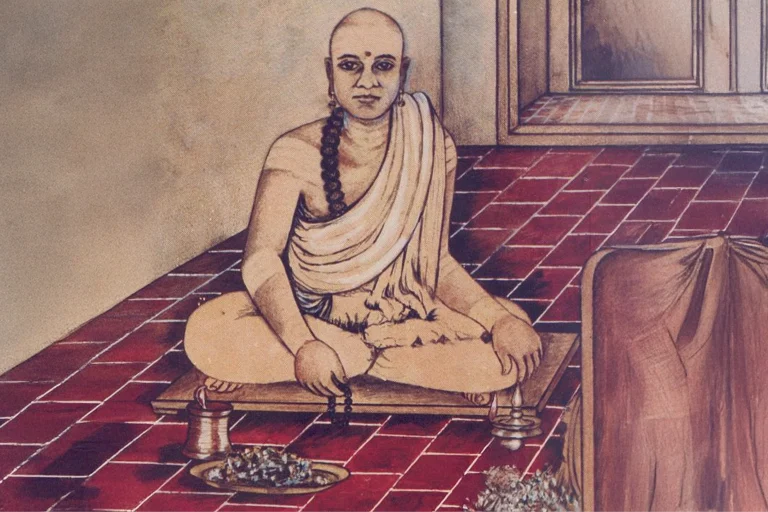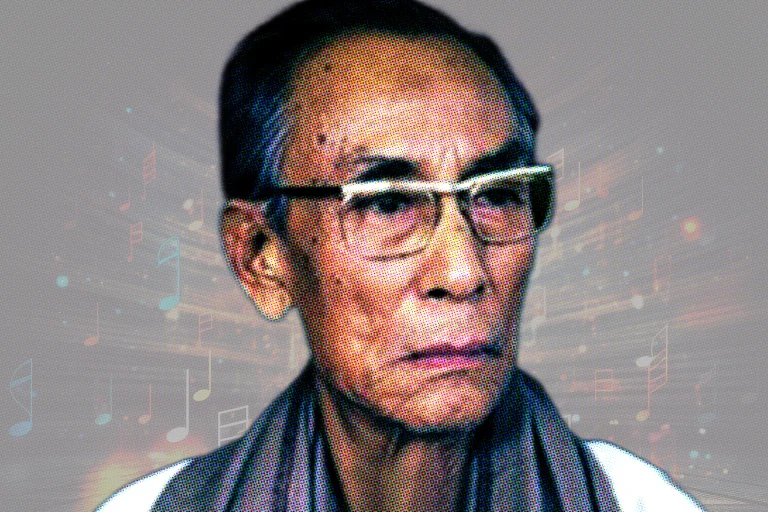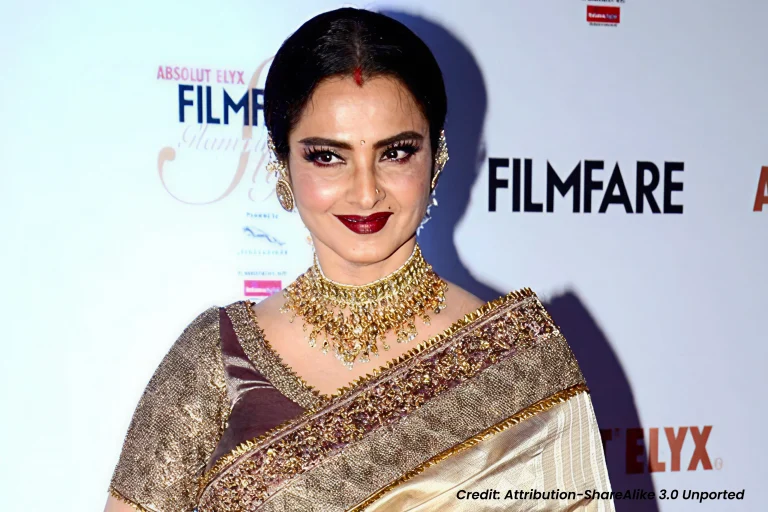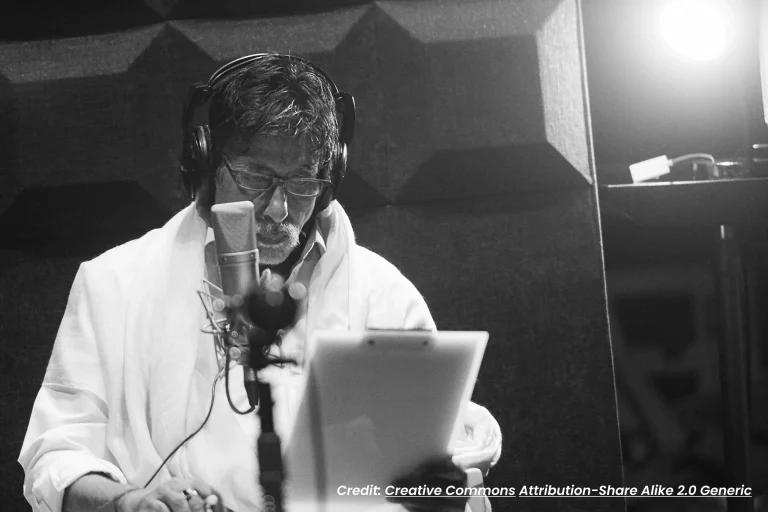All Topics
- Alchemizing Music Concepts for Students
- Artist Spotlight
- artium gift card
- Artium Maestros
- Artium News
- buying guide
- Carnatic Music
- Devotional Music
- Editorials by Ananth Vaidyanathan
- Film Music
- Guitar
- Hindustani Classical Music
- Indian Classical Music
- Indian Folk Music
- Insights
- Instruments
- Karaoke Singing
- Keyboard
- Kids Music
- maestros
- Music Education
- Music for Kids
- Music Industry
- Music Instruments
- Music Legends
- Music Theory
- Music Therapy
- Piano
- piano guide
- Tamil Film Music
- Telugu Film Music
- Time Theory
- Tools
- Uncategorized
- Vocal Singing
- Vocals
- western classical music
- western music
- Western vocal music
Carnatic Music, Film Music, Telugu Film Music
Top 10 Timeless Telugu Film Songs You Can’t Miss
Top 10 Timeless Telugu Film Songs You Can’t Miss
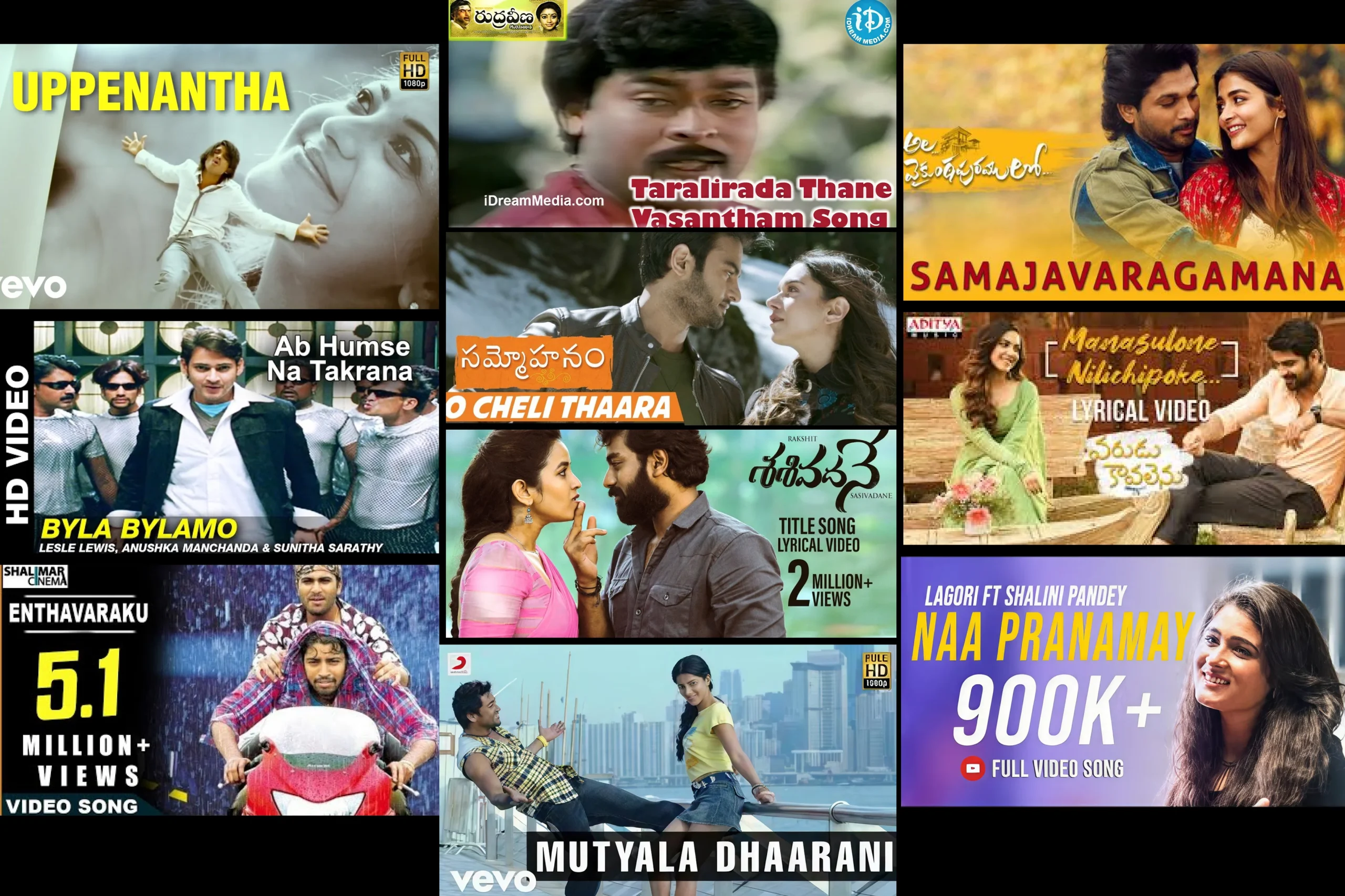
Table of Contents
In the vibrancy of Indian cinema, film songs from the Telugu industry hold a special, shimmering thread – a realm where melody reigns supreme, rhythms dance, and emotions find their most authentic voice.
These aren’t just fleeting tunes; they are timeless creations of Telugu film songs that resonate across generations, deeply embedded in the hearts of millions. Their immense popularity comes from their exceptional ability to portray the full range of music that resonates with human emotions. This includes everything from deep love and joyful celebration to heartfelt longing and spirited rebellion.
This blog delves into the enchanting world of these enduring masterpieces, exploring the connotations and cultural nuances that give them their unique power. We’ll celebrate the brilliance of legendary music directors who shaped this sonic landscape, like Ghantasala, S. Rajeswara Rao, and, more recently, Ilaiyaraaja and M.M. Keeravani.
Often, the soul of Telugu movie songs lies in their skillful integration of Carnatic ragas. While a myriad of ragas are used, the pervasive influence of scales like Mohanam, Kalyani, Kharaharapriya, and Sankarabharanam often forms the backbone, subtly underpinning the cinematic melodies.
We’ll explore the beauty behind these immortal hit Telugu songs, understanding why their charm remains unbroken.
Melodies that Transcend Time: Tracing the Evolution of Telugu Film Songs
Telugu film music has embarked on a fascinating journey, transforming from its classical roots into a dynamic, globally recognized soundscape. This evolution reflects not only technological advancements in cinema but also shifts in societal tastes and cultural trends for songs in the Telugu language.
The Golden Era: Classical Roots & Melodic Purity (1940s-1970s)
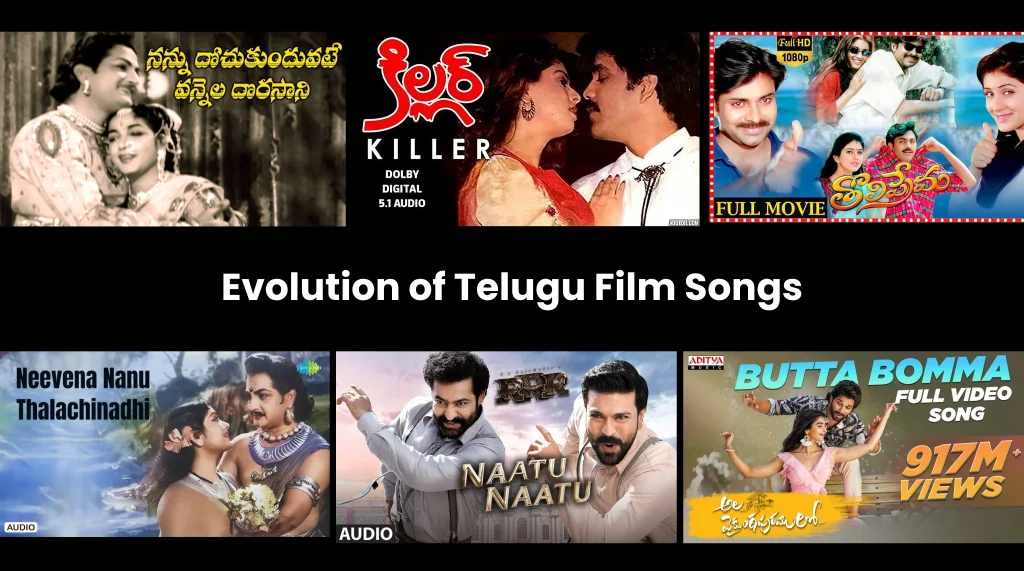
Early Telugu film music was deeply influenced by Carnatic classical traditions and the stage plays of the time. Music directors like Ghantasala Venkateswara Rao and S. Rajeswara Rao were pioneers, blending ragas and traditional compositions with cinematic narratives.
Songs were often melodically rich, focusing on the purity of voice and instrumentation that leaned towards acoustic sounds. Playback singing became prevalent, allowing actors to emote while skilled vocalists lent their voices to the performances. Iconic films from this period are characterized by songs that felt like extensions of classical concerts, deeply emotional and soulful.
Songs were often melodically rich, focusing on the purity of voice and instrumentation that leaned towards acoustic sounds. Playback singing became prevalent, allowing actors to emote while skilled vocalists lent their voices. Iconic films from this period are characterized by songs that felt like extensions of classical concerts, deeply emotional and soulful.
Examples: “Nannu Dochu Kunduvate” from Gulebakavali Katha (1962) and “Neevena Nanu Talachinadi” (there’s no song like this in Mayabazar) from Mayabazar (1957) perfectly showcase the melodic richness and classical essence of this era.
The Synthesized Sound: Experimentation and Fusion (1980s-2000s)
The late 20th century saw a significant shift with the advent of synthesizers and Western orchestration. Maestros like Ilaiyaraaja, while deeply rooted in South Indian classical music, fearlessly experimented with electronic elements and orchestral arrangements. This era introduced a more contemporary feel, with faster tempos and elaborate musical layers.
Music directors like Mani Sharma became kings of background scores, and M.M. Keeravani began his illustrious career, crafting diverse melodies that fused traditional aesthetics with modern sounds. This period witnessed a commercial boom, with songs becoming major selling points for films.
Examples: “Priya Priyathama Ragalu” from Killer (1992) and “Ekkada Nunchi” from Jhalak, composed by S. A. Raj Kumar, illustrates the vibrant fusion and technological embrace of this period.
The Global Beat: Pop, EDM, and Pan-Indian Appeal (2010s-Present)
The new millennium ushered in an era of globalization and technological prowess. Music directors like Devi Sri Prasad and S.Thaman incorporated strong pop, EDM, and hip-hop influences, creating energetic, highly rhythmic dance numbers that resonated with a younger demographic.
The rise of private television channels and the internet further democratized music, allowing sounds to travel far and wide.
Telugu film music started gaining pan-Indian recognition, culminating in global phenomena like “Naatu Naatu” by M.M. Keeravani, which showcased Telugu music’s ability to blend infectious rhythms, captivating melody, and universal appeal, securing an Oscar and cementing its place on the world stage. This ongoing evolution continues to embrace innovation while often retaining the inherent melodic strength that is a hallmark of Indian musical thought.
Examples: “Naatu Naatu” from RRR (2022), composed by M.M. Keeravani, with its global appeal and infectious energy, and “Butta Bomma” from Ala Vaikunthapurramuloo (2020), composed by S. Thaman, a viral hit that showcases strong contemporary pop influences.
10 Memorable Telugu Film Songs that You Can’t Miss:
This carefully curated list goes beyond just Telugu hits to explore the actual depth of Telugu movie songs, showcasing why these melodies resonate across generations.
These songs from Telugu movies serve as a testament to the enduring power of cinema’s musical genius.
Uppenantha e Premaki
From the Telugu film Arya 2 is a vibrant, effervescent declaration of love, where the emotion is likened to a surging tide or an endless ocean. Penned by Balaji, the lyrics poetically articulate a love so vast it defies measurement, emphasizing its overwhelming and exhilarating nature. Sung by Devi Sri Prasad and KK, the song captures the giddy excitement of nascent romance.
Composed by the brilliant Devi Sri Prasad, the music is upbeat and energetic, reflecting the youthful exuberance of the lyrics. “Uppenantha E Premaki” leans on a light, melodic framework, often reminiscent of Shuddha Dhanyasi or similar bright, expansive scales, known for evoking joy and grandeur. The tala is a common Adi Tala (8 beats), driving its infectious rhythm.
The song’s technical brilliance lies in its layered orchestration—a DSP (Devi Sri Prasad) style. It prominently features a blend of synthesizers, electric guitar, driving percussion (including tabla and electronic drums), and string sections, creating a rich, full sound that perfectly embodies the song’s “tidal wave” metaphor. The overall tone is one of unbridled optimism and playful passion, making it an enduring anthem for young love.
Taraliradha Thane Vasantham
“Taraliradha Thane Vasantham” from the 1988 Telugu film Rudraveena is more than a song; it’s like “The Spring that Seeks,” a philosophical treatise set to music. The lyrics by the legendary Sirivennela Sitaramasastri pose a central question: “Doesn’t Spring itself come seeking the forests that cannot reach it?” This poetic inquiry extends to moonlight illuminating the wilderness and the breeze reaching all, urging humanity to share knowledge and art with those who cannot access it.
It’s a powerful call for art and compassion to transcend boundaries and social stratification. Sung by the mellifluous S. P. Balasubrahmanyam, his voice perfectly embodies the song’s tender yet resolute conviction. The genius of Ilaiyaraaja as a composer shines through, crafting a melody deeply rooted in the Hamsadhwani raga, known for its uplifting and dignified character. The tala is Adi Tala (8 beats), providing a steady yet flowing rhythm that allows the melody to breathe.
Technically, Ilaiyaraaja masterfully uses minimalistic yet impactful instrumentation. Prominent are the flute, strings, and subtle percussion, creating an ethereal and contemplative tone. The song’s initial a cappella-like rendering by SPB, punctuated by the sounds of an axe, grounds it in its rustic context, before blossoming into a full, serene orchestration. It is a testament to how classical depth can serve powerful social commentary through beautiful cinema.
Samajavargamana
This song from the Telugu film ‘Ala Vaikunthapurramuloo’ is a lyrical masterpiece, a poetic ode to the beloved’s graceful presence, so enchanting it could mesmerize even the elephants of the assembly of gods. The Telugu lyrics, penned by Sirivennela Sitarama Sastry, evoke a sense of ethereal beauty and profound admiration, likening the beloved’s very walk to a divine, captivating rhythm. Sung with breathtaking tenderness by Sid Sriram, his voice glides effortlessly, amplifying the song’s serene charm.
Composed by S.Thaman, this song stands out in his discography for its gentle, almost classical-leaning melody. It is widely recognized as being set in Raga Hindolam (also known as Malkauns in Hindustani), a pentatonic raga celebrated for its deep, contemplative, and soothing qualities, often associated with evoking feelings of devotion and tranquility. The tala used is a gentle, flowing Adi Tala (8 beats), providing a subtle yet steady foundation that allows the melody to breathe.
The technical brilliance lies in its minimalistic yet rich orchestration. Unlike many contemporary hits, “Samajavaragamana” champions melody, predominantly featuring elegant acoustic guitar arpeggios, a soft bassline, delicate percussion, and a restrained use of strings to create a lush, ambient soundscape. The tone is utterly romantic, serene, and almost spiritual, drawing the listener into a meditative state of admiration.
Byla Bylamo
This song is referred to as ‘A Symphony of Confusion and Charm’. “Byla Bylamo” from the 2006 Telugu film Sainikudu is a unique composition that playfully delves into the exhilarating confusion of falling in love. The phrase “Byla Bylamo” (“Baila Bailamo”) itself is an onomatopoeic creation, suggesting a delightful mix of bewilderment and wonder.
Lyricist Chandrabose crafts verses that speak of being swept off one’s feet, of a mind buzzing with new feelings, and the dizzying effect of an intoxicating presence. It’s a song about surrender to an overwhelming, yet delightful, emotional state.
The song is composed by Harris Jayaraj, known for his vibrant, contemporary soundscapes. It features the distinctive voices of Lesle Lewis, Anushka Manchanda, and Sunitha Sarathy, whose dynamic delivery perfectly captures the song’s energetic and somewhat whimsical tone.
While not strictly adhering to classical forms, Harris Jayaraj’s compositions often draw from melodic sensibilities, with an extensive use of minor scales, which possess a certain playful and mystical quality, albeit presented in a modern context. The tala is typically a lively Adi Tala (8 beats), driving its infectious rhythm.
Technically, the song showcases Jayaraj’s signature style of electronic orchestration blended with world music elements. Prominent instruments include synthesizers, percussion loops, layered vocals, and occasional Middle Eastern or tribal-sounding instrumentation, creating a rich, almost hypnotic sound. The overall tone is energetic, quirky, and modern, embodying the captivating chaos of newfound affection.
O Cheli Thaara
This song is referred to as ‘Whispers of the Star’. “O Cheli Thaara” from the 2018 Telugu film Sammohanam is a tender, melancholic ode to a distant beloved, where the “star” (Thaara) embodies the unreachable yet guiding presence of lost or unrequited love.
The poignant lyrics, crafted by Ramajogayya Sastry, express a yearning for a presence that illuminates life, contrasting it with the profound void felt in their absence. It’s a lament born from understanding what was cherished only after it’s gone.
The soul-stirring vocals are rendered by Haricharan, whose voice perfectly captures the song’s gentle sorrow and deep longing. The music, composed by Vivek Sagar, is characterized by its minimalistic yet evocative arrangement. While not strictly bound by classical rules, the song evokes shades of Raga Bhageshri and Rageshri or similar poignant evening ragas known for their ability to convey pathos and devotion. The tala is typically a Misra Chaapu Talam, providing a steady, contemplative pulse.
Technically, the song’s beauty lies in its subtle layering. It features prominent use of acoustic guitars, a gentle rhythm section (often with soft percussion), and understated string arrangements that swell and recede, mirroring the emotional ebb and flow. The overall tone is one of introspection, bittersweet remembrance, and a quiet plea, making it a deeply resonant piece that lingers long after its final note.
Manasulone Nilichipoke
This song is referred to as ‘A Whisper of Unspoken Love.’ “Manasulone Nilichipoke” from the Telugu film Varudu Kaavalenu (2021) is a delicate, introspective melody that beautifully captures the poignant dilemma of unspoken affection. The title itself, roughly translating to “Don’t just stay in my heart,” hints at a burgeoning love hesitant to emerge.
The lyrics by the legendary Sirivennela Sitarama Sastry convey a woman’s internal struggle as she grapples with deep feelings, wishing to express them yet held back by shyness. The ethereal vocals of Chinmayi Sripaada lend a soulful, almost melancholic sweetness, perfectly embodying the tender yearning. Composed by Vishal Chandrashekhar, the music embraces a serene and understated tone.
The song evokes the tranquil and introspective mood often associated with ragas like \ Reetigowla or similar scales that convey gentle longing. The tala is a measured, flowing Rupaka Tala, providing a subtle rhythmic current.
Technically, the song’s beauty lies in its minimalist yet rich arrangement. Prominent instruments include a soothing piano, delicate strings (often violin and veena), and a gentle rhythmic section that supports Chinmayi’s nuanced vocals without overpowering them. The overall musical tone is one of graceful contemplation and heartfelt wistfulness, creating an intimate soundscape for the listener to immerse themselves in this unspoken love story.
Entha Varaku Endhu Koraku
“Entha Varaku Endhu Koraku” (Till when? For what? What is this endless chase?), from the profound Telugu film Gamyam, is a philosophical gem that delves into the essence of life’s journey. The lyrics, penned by the legendary Sirivennela Seetharama Sastry, are a poignant contemplation on purpose, urging listeners to find meaning not in the destination but within the journey itself. It questions the relentless pursuit, suggesting that accurate answers lie within one’s own heart and perspective.
The song is sung by Ranjith, with music composed by E.S. Murthy and Anil R. While specific Carnatic ragas are rarely strictly adhered to in film music, the melody evokes a sense of introspection and gentle longing, drawing upon a contemplative scale, possibly hinting at shades of Natabhairavi or similar evening ragas known for their thoughtful and serene qualities. The tala is a steady, flowing rhythm, likely a variation of Adi Tala, providing a subtle yet persistent pulse that mirrors the continuous flow of life.
Technically, the song’s brilliance lies in its minimalist yet impactful instrumentation. It predominantly features haunting strings (violin, cello), a subtle acoustic guitar, and soft percussion, creating an ethereal and introspective atmosphere. The tone of the music is melancholy mainly yet hopeful, encouraging self-reflection and inner discovery rather than external striving. It’s a profound auditory experience that resonates with anyone questioning their path.
Mutyala Dhaarani
“Mutyala Dhaarani” from the film 7th Sense (dubbed from Tamil’s 7aam Arivu) is a shimmering serenade, its title translating to “Pearls of the Night,” evoking images of moonlit beauty and tender intimacy. The lyrics, penned by Bhuvana Chandra, paint a dreamy landscape where a lover yearns to rest sweetly in their beloved’s embrace, to become the gentle breeze in a blossoming garden, or the first melody of dawn. It’s a poetic yearning for closeness and a silent promise of eternal devotion.
The song’s ethereal quality is masterfully crafted by composer Harris Jayaraj. While not strictly classical, its underlying melodic framework often alludes to the tranquility and contemplative beauty of raga Shankarabharanam, known for its ability to evoke peace and love. The tala is a steady Adi Tala, providing a gentle yet consistent pulse that allows the melody to flow freely.
Musically, “Mutyala Dhaarani” is characterized by its lush, ambient soundscape. Key instruments include a prominent piano that provides the core harmony, atmospheric synthesizers, soft strings (such as violins and cello), and subtle flute embellishments that add to its dreamy texture. The overall tone is one of serene romance and heartfelt longing, delivered beautifully by singers Karthik and Megha, whose voices blend seamlessly to create a truly captivating auditory experience.
Naa Pranamay
For the soulful Telugu song “Naa Pranamay” from the movie Mehbooba: “Naa Pranamay,” meaning “My Life,” is a hauntingly beautiful melody that delves into the profound yearning and spiritual connection of love.
Lyricist Krishna Kanth paints a canvas of deep emotional attachment, where the beloved becomes the very essence of existence, transcending physical presence. Sung with mesmerizing clarity by Tejas Shankar & Shalini Pandey, their voices carry the delicate balance of longing and serene devotion.
The song’s tender, evocative music is composed by Hriday Goswami. While modern film compositions often blend various influences, “Naa Pranamay” powerfully evokes the serene and introspective mood of a Shuddha Dhanyasi-like raga, or perhaps a similar scale known for its gentle, contemplative quality, often associated with devotion. The tala is typically a slow or medium-paced Adi Tala, providing a subtle, unwavering rhythm that allows the melody to breathe calmly.
Technically, the song’s brilliance lies in its minimalist yet deeply impactful orchestration. It features prominent acoustic guitar arpeggios, gentle piano chords, a subtle string section that swells with emotion, and light percussion, all building an ethereal soundscape. The tone is overwhelmingly melancholic yet hopeful, creating an immersive experience that resonates with anyone who has known a love so deep it defines their very being.
Sasivadane
“Sasivadane” from the 1997 film Iddaru (released as Iruvar in Tamil) is a hauntingly beautiful declaration of love and longing. Penned by the lyrical maestro Veturi Sundararama Murthy, the song’s title itself, “Sasivadane,” means “moon-faced one,” poetically referring to the beloved. The lyrics, rich with classical allusions and vivid imagery, weave a spell of deep affection and yearning, questioning if the beloved possesses the same captivating qualities as the celestial moon and melodious ragas.
Composed by A.R. Rahman, the music is a sublime fusion, reflecting his distinctive ability to blend traditional Indian sensibilities with contemporary orchestral grandeur. “Sasivadane” is notably based on Raga Naata, a Carnatic raga known for its serene, gentle, and often melancholic yet deeply soothing character, frequently used in the devotional genre. The song also has a few shades of Maand, making it haunting. The tala is Adi Tala (8 beats), providing a steady, flowing rhythm that allows the melody to breathe and expand.
Technically, the song features a delicate interplay of Carnatic-inspired vocalization, particularly by P. Unnikrishnan and Bombay Jayashri, with a rich backdrop of strings (violins, cello), subtle percussion (tabla, mridangam samples), and flute, creating an ethereal and introspective tone. Rahman’s mastery is evident in the sparse yet impactful arrangement, allowing the purity of the raga and the profound lyrics to shine, leaving a lasting, tender imprint on the listener’s soul.
Learn Telugu Film Songs Online at Artium Academy
Inspired by the timeless melodies of “Nannu Dohchu Kunduvate,” the energetic beats of “Okka Magadu,” or the global sensation “Naatu Naatu”? Have you ever wished you could not just enjoy, but truly understand and sing these incredible Telugu film songs? Artium Academy makes that dream a reality.
At Artium, you can delve deep into the world of popular Telugu film music through our comprehensive online music classes. Our curriculum is designed to teach you not just the songs, but the very essence of the music itself. You’ll learn the underlying music theory from our world-class expert teachers and gain insights into the ragas and talas that form the backbone of these styles, understanding the subtle Carnatic influences in a Golden Era classic or the intricate rhythmic patterns of a modern hit.
Our instructors/teachers, with their deep-rooted knowledge and passion, will guide you through every nuance, enabling you to sing with authenticity and flair.
Whether you’re a beginner or looking to refine your skills, Artium provides the perfect platform for all ages to immerse themselves in the rich legacy of Telugu film music.
[Validated by Srividya JV, Faculty – Tamil Music, Artium Academy]
FAQs on Telugu Film Songs
Some of the Telugu movie songs that beginners must listen are:
1) Anjali Anjali Anjali
2) Butta Bomma
3) Naatu Naatu
4) Apudo Ipudo
5) Jallanta Kavvintha
6) Godari Gattumida Ramasilaka
7) Chitti Story
8) Vacchinde Mella Mellaga
9) Nijamga Nenena
10) Oho Laila O Charusheela
Yes, you can! Many online music platforms teach Telugu film songs, focusing on melody, pronunciation, and expression, making it easy to learn even if you do not speak the language. Teachers often break down the lyrics and guide you through meaning and delivery, so you can sing with confidence and emotion.
The best Telugu song for a singing competition depends on your vocal range and style. Melodic songs like “Evare” or “Kanulanu Thaake” are great for showcasing emotion and control, while powerful tracks like “Saahore Baahubali” suit strong voices. If you are classically trained, try “Jagadananda Karaka.” Pick a song that highlights your strengths, ensures clear pronunciation, and leaves a lasting impact on both judges and the audience.
A few slow-tempo Telugu songs ideal for all beginners are:
1) Chinni Chinni Aasa
2) Jaamu Ratiri
3) Manasuna edo Ragam
4) Nenani Neevani
5) Yamuna Thatilo
6) Kammani Ee Premalekhane
7) Maate Vinaduga
8) Inthandam
9) Kanipenchina Ma Ammake
10) Nilavadhe Madi Nilavadhe
The Telugu Film Music course at Artium is suitable for both adults and kids. It’s designed to adapt to different age groups and learning goals, whether you’re a beginner exploring music for the first time or an adult rekindling a passion for singing. With personalized 1:1 sessions, expert mentors, and flexible pacing, learners of all ages can enjoy and benefit from the course.
Artium’s Telugu Film Music course offers a structured yet melodious way to learn Telugu songs, tailored for both kids and adults. With 1:1 personalised classes, learners get expert guidance on vocal techniques, pitch control, and music theory. You’ll sing popular Telugu film songs while improving your voice, expression, and confidence.
The course is designed for all age groups and skill levels, with flexible online sessions, curated content, and performance opportunities. Backed by industry legends such as Aruna Sairam, K.S. Chithra, and Ananth Vaidyanathan, this course combines cinematic music with rigorous vocal training, creating a unique and enriching learning experience for every music enthusiast.



